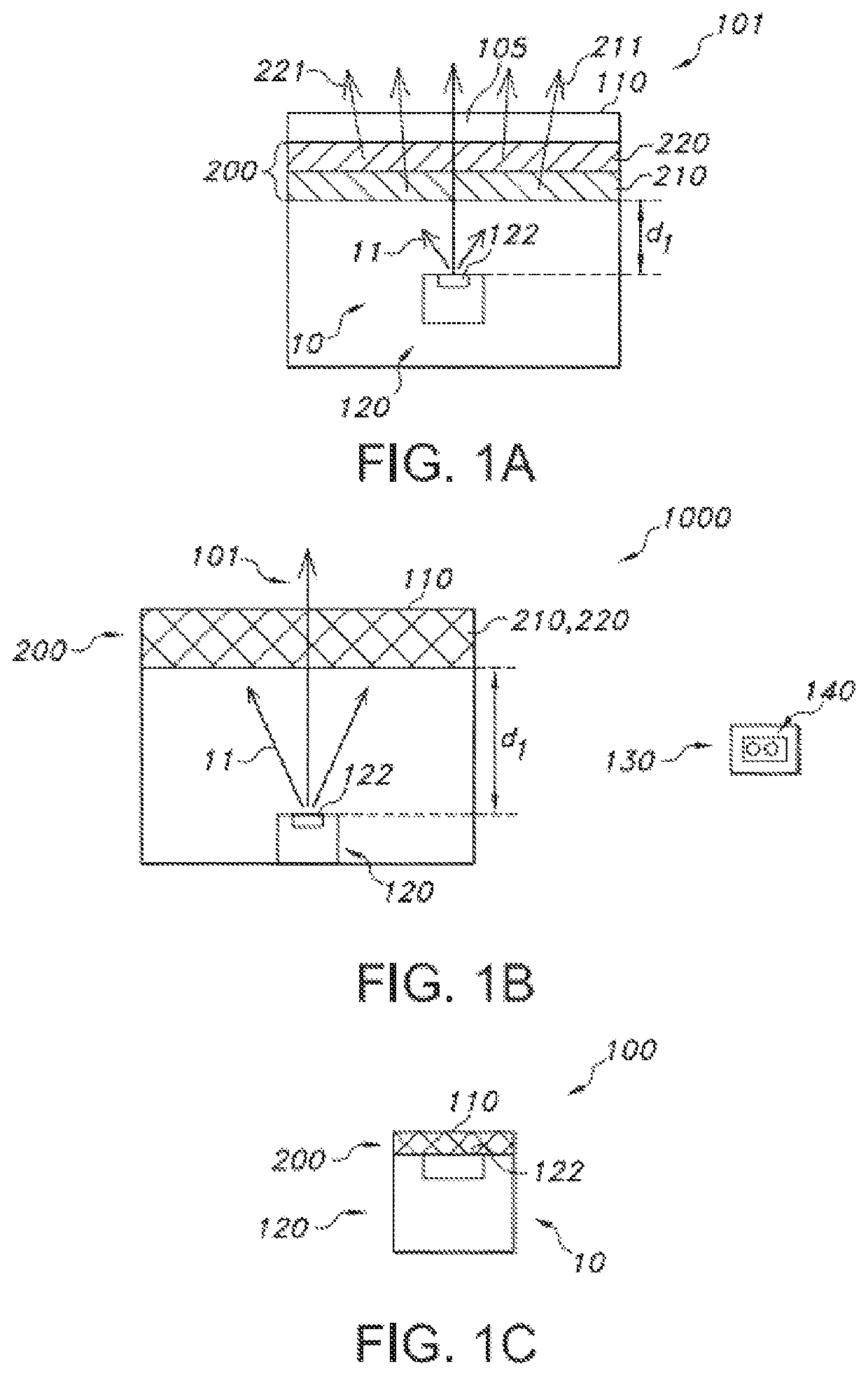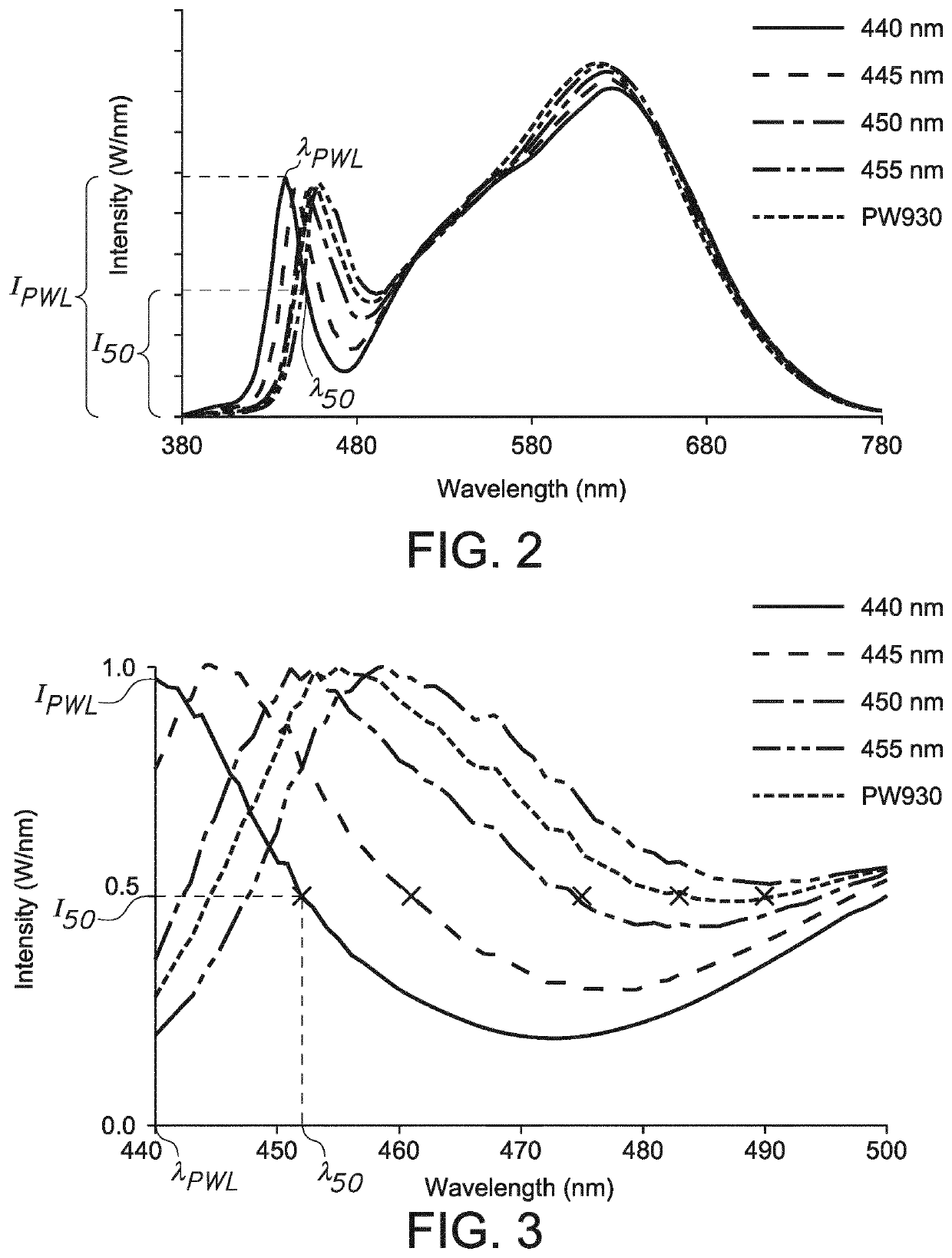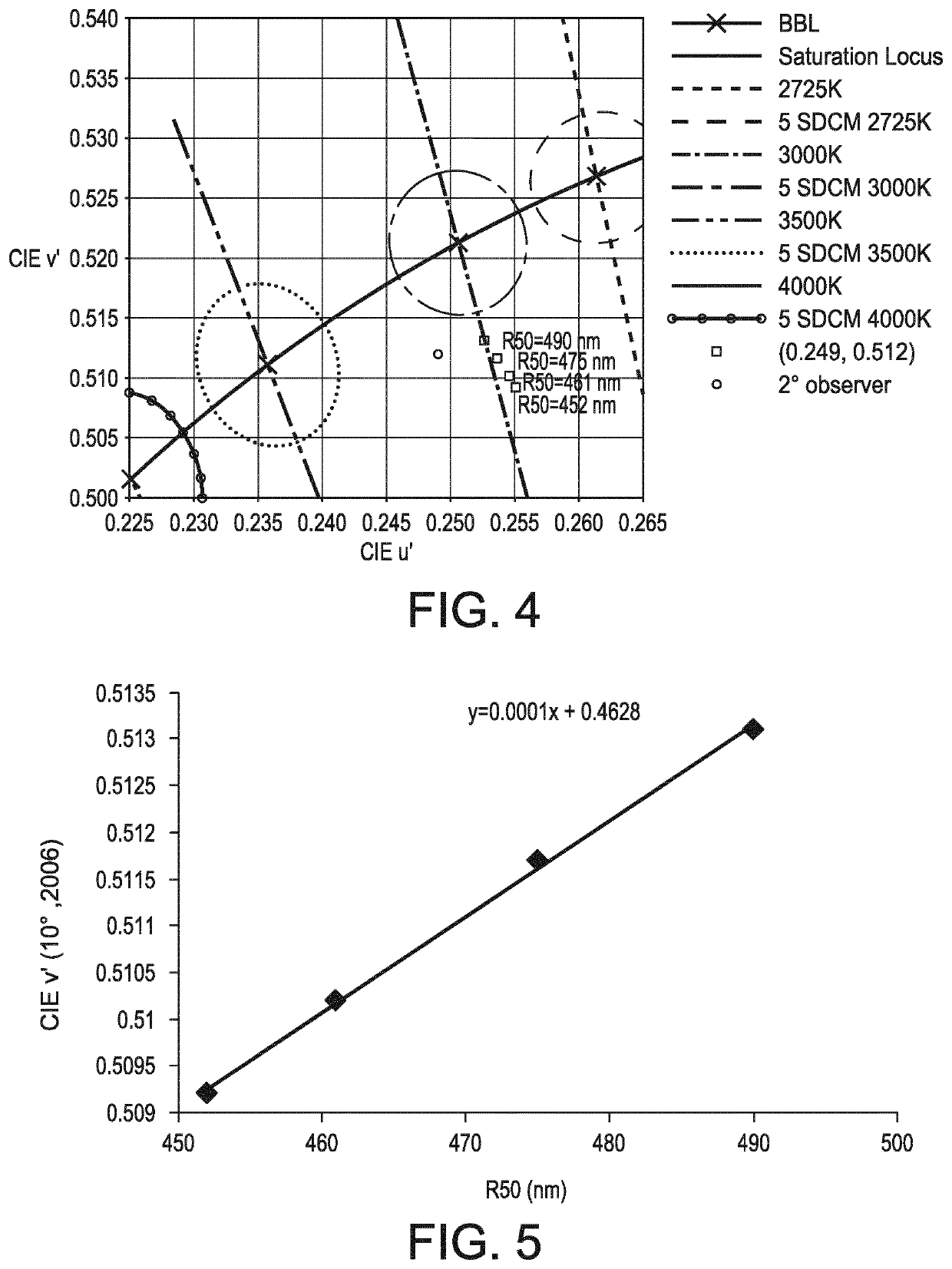Warm white LED spectrum especially for retail applications
a led spectrum and retail technology, applied in lighting applications, lighting support devices, lighting and heating apparatuses, etc., can solve the problems of lagging efficiency, color and white perception, general acceptance of led solutions, etc., and achieve good efficiency
- Summary
- Abstract
- Description
- Claims
- Application Information
AI Technical Summary
Benefits of technology
Problems solved by technology
Method used
Image
Examples
Embodiment Construction
[0132]FIG. 1a schematically depicts an embodiment of a lighting device 100 as described herein. The lighting device 100 comprises a light source 10 configured to provide blue light source light 11, a first luminescent material 210 configured to convert at least part of the light source light 11 into first luminescent material light 211 with light intensity in one or more of the green spectral region and yellow spectral region and a second luminescent material 220 configured to convert (i) at least part of the light source light 11, or (ii) at least part of the light source light 11 and at least part of the first luminescent material light 211 into second luminescent material light 221 with light intensity in the orange and / or red spectral region.
[0133]Further, the lighting device comprises a light exit face 110. Herein in the embodiment of FIG. 1a, this may be the downstream face of a window 105.
[0134]The terms “upstream” and “downstream” relate to an arrangement of items or feature...
PUM
| Property | Measurement | Unit |
|---|---|---|
| peak wavelength | aaaaa | aaaaa |
| peak wavelength | aaaaa | aaaaa |
| CRI | aaaaa | aaaaa |
Abstract
Description
Claims
Application Information
 Login to View More
Login to View More - R&D
- Intellectual Property
- Life Sciences
- Materials
- Tech Scout
- Unparalleled Data Quality
- Higher Quality Content
- 60% Fewer Hallucinations
Browse by: Latest US Patents, China's latest patents, Technical Efficacy Thesaurus, Application Domain, Technology Topic, Popular Technical Reports.
© 2025 PatSnap. All rights reserved.Legal|Privacy policy|Modern Slavery Act Transparency Statement|Sitemap|About US| Contact US: help@patsnap.com



